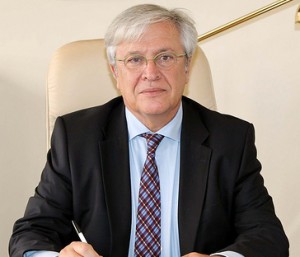
Last week, the United Nations and the entire world celebrated this year’s edition of the World Habitat Day (WHD), a global event that serves to reflect on the state of the world’s towns and cities and the basic right of all to adequate shelter. It is also intended to remind the world that we all have responsibility to shape the future of our cities and towns.
This year, the United Nations chose the theme “Urban Mobility” because, according to the global body, mobility and access to goods and services are essential to the efficient functioning of cities and towns as they expand. Accessible cities encourage a shift towards more sustainable modes of transportation and draw more and more travellers out of cars and onto trains, buses, bike paths, and sidewalks, disclosed the UN.
“But mobility is about more than just the mode of transport we use. Urban planning and design should focus on how to bring people and places together, by creating cities that focus on accessibility, and optimal urban densities, rather than simply increasing the length of urban transport infrastructure,” disclosed UN officials.
UN Secretary-General, Ban Ki-moon, in a statement to mark the occasion, reflects that, for more than half a century, most countries have experienced rapid urban growth and increased use of motor vehicles, adding that this has led to urban sprawl and even higher demand for motorised travel, with a range of environmental, social and economic consequences.
According to him, urban transport is a major source of greenhouse gas GHG) emissions and a cause of ill-health due to air and noise pollution. He added that the traffic congestion created by unsustainable transportation systems is responsible for significant economic and productivity costs for commuters and goods transporters.
His words: “These challenges are most pronounced in developing country cities. It is here that approximately 90 per cent of global population growth will occur in the coming decades. These cities are already struggling to meet increasing demand for investment in transportation. They must also face the issue of ‘transport poverty’. Millions of people are denied the benefits of public or private transport due to cost; persons with disabilities and the elderly are regularly excluded by practicality; and safety is a serious issue for many women, young persons and minorities made vulnerable by faith or ethnicity.
“Mobility is not just a question of building wider or longer roads; it is about providing appropriate and efficient systems that serve the most people in the best, most equitable manner. This includes encouraging a transition from car use to trains, buses and bicycles, and bringing more pedestrians onto well-lit sidewalks.
“People need to be able to get to work, school, hospitals and places of recreation safely and quickly. Getting mobility right can regenerate urban centres, boost productivity and make a city attractive for all users – from investors to visitors and residents.
“Urban transport is central to sustainable development. On this World Habitat Day let us commit to making our cities and towns accessible to all.”
The WHD 2013 theme is connected to the Global Report on Human Settlements (GRHS) 2013: “Planning and Design for Sustainable Urban Mobility.” A call for improved accessibility and mobility in urban areas for more efficient of the world’s cities and towns is a core message of the report.
“Mobility is an important part of city design as it contributes, not only to the liveability of a city in terms of reduced congestion and pollution, but also to the economic potential, allowing the efficient movement of people and goods. Mobility is at the core of equitable access to basic goods, services and activities – such as work, education, medical care, shopping, socializing – and to enable people to participate in civic life,” Executive Director of the United Nations Human Settlements Programme (UN-Habitat), Dr. Joan Clos, said.
Clos added: “Every year on the first Monday of October we reflect on the state of our cities and towns and what we want the cities of our future to look like.
“This year, the United Nations chose the theme Urban Mobility because mobility and access to goods and services is essential to the efficient functioning of our cities and towns as they expand.
“Mobility is an important part of city design as it contributes, not only to the liveability of a city in terms of reduced congestion and pollution, but also to the economic potential, allowing the efficient movement of people and goods. Mobility is at the core of equitable access to basic goods, services and activities – such as work, education, medical care, shopping, socializing – and to enable people to participate in civic life.
“Furthermore, accessible cities encourage a shift towards more sustainable modes of transportation and draw more and more travellers out of cars and onto trains, buses, bike paths, and sidewalks.
“Over time, the collective costs of ‘automobility’ have become abundantly apparent – including urban sprawl, air and noise pollution, climate change, road traffic accidents, and the physical separation of people by class and race.
“But mobility is about more than just the mode of transport we use. Urban planning and design should focus on how to bring people and places together, by creating cities that focus on accessibility, rather than simply increasing the length and capacity of urban transport infrastructure.
